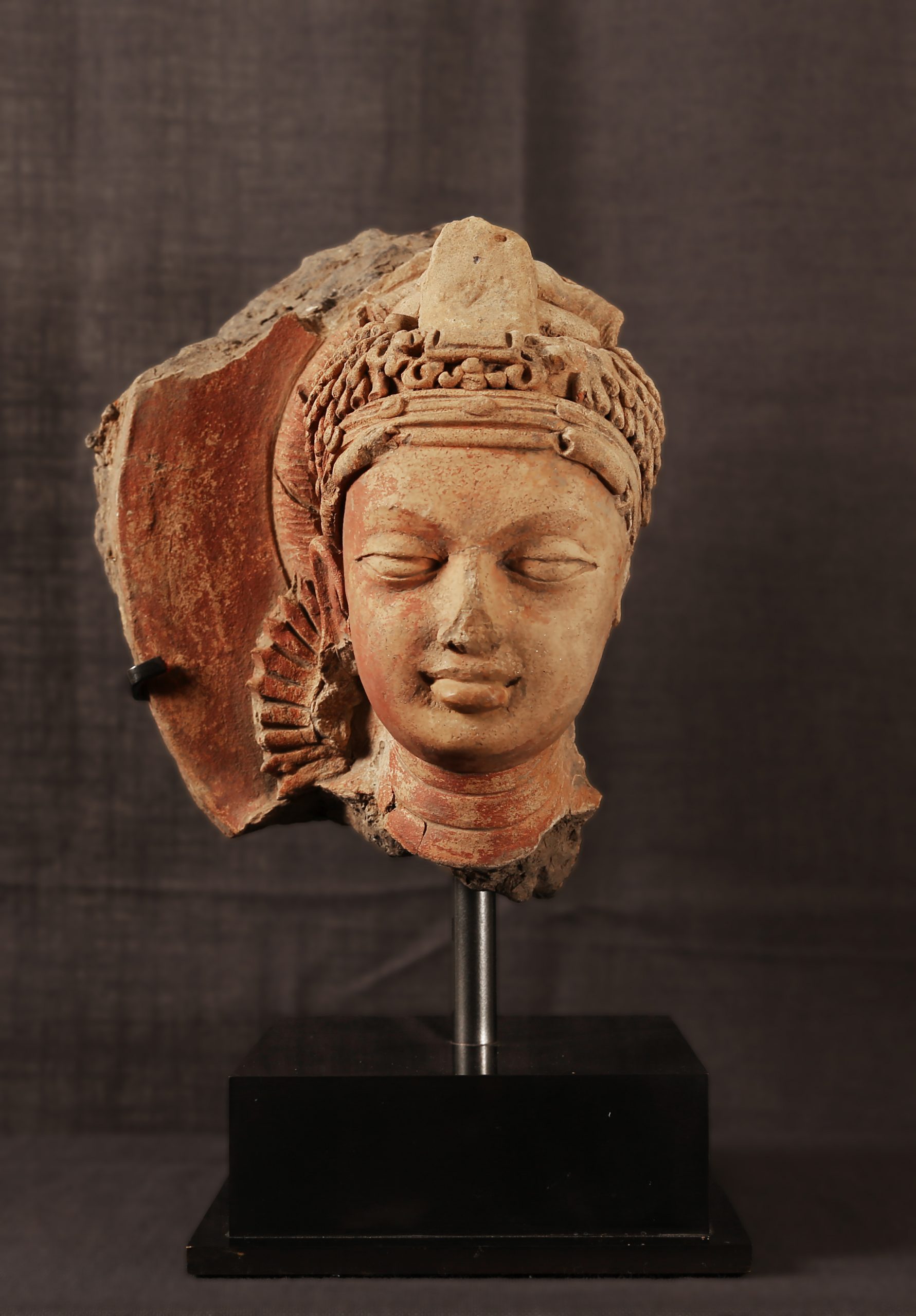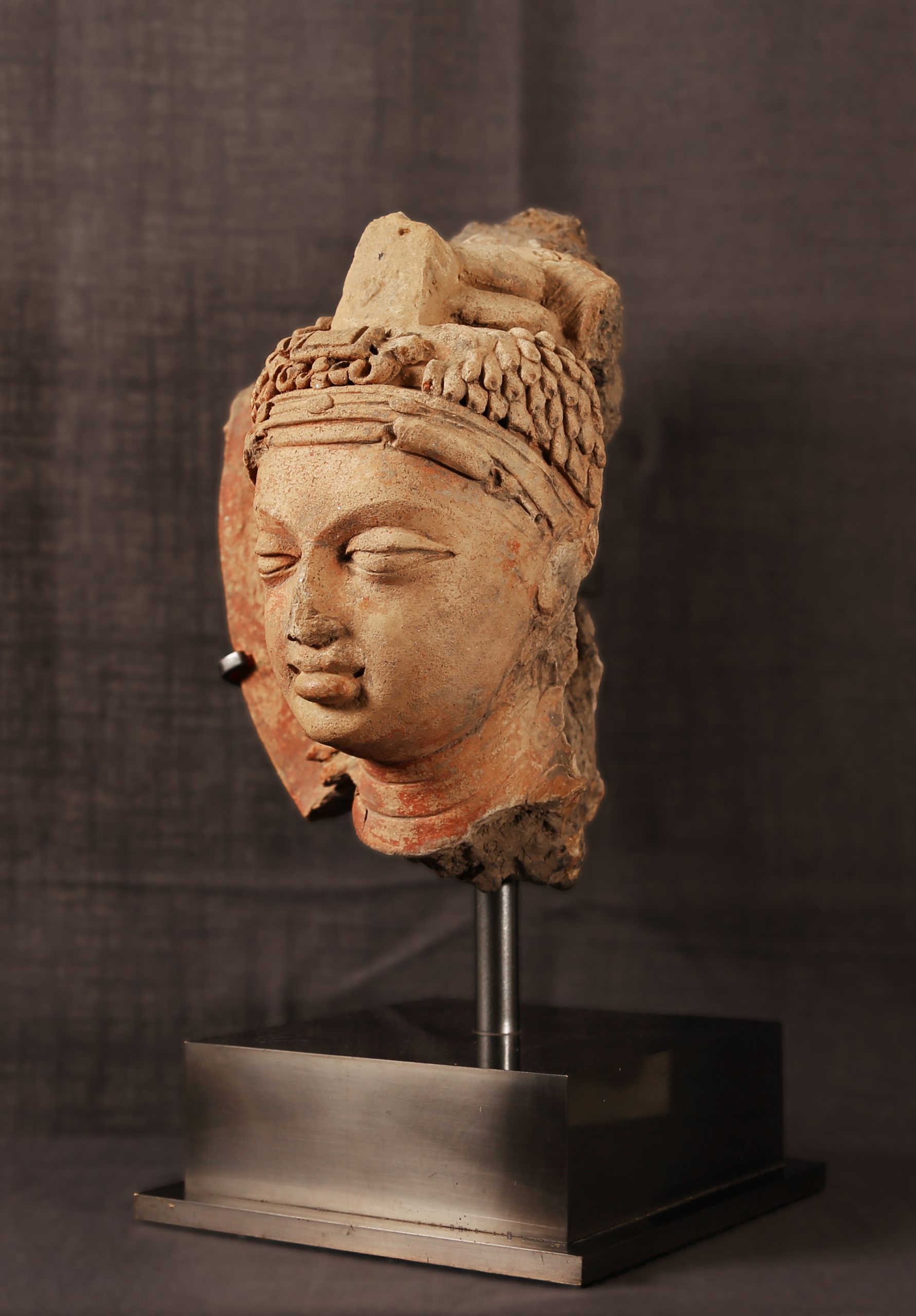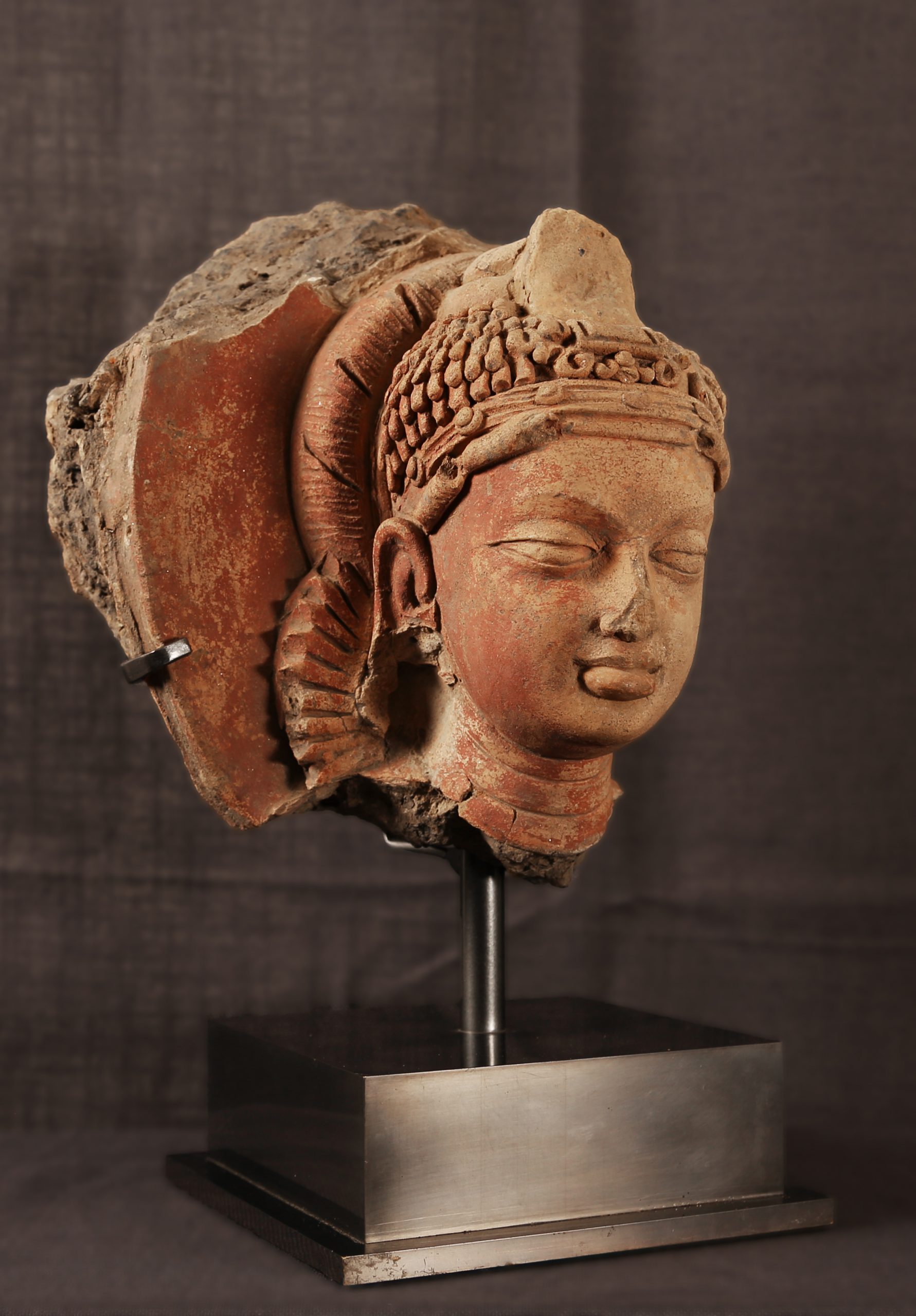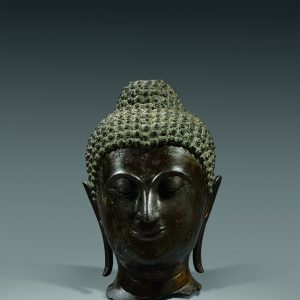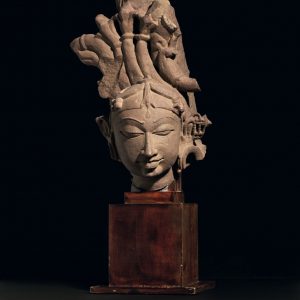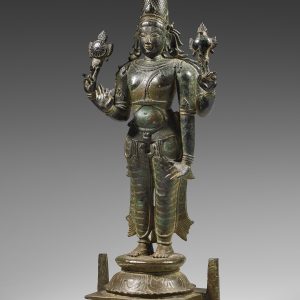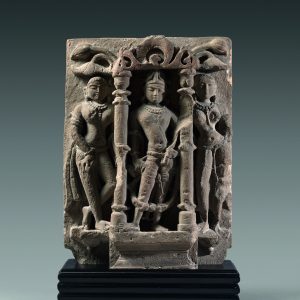Head of Durgā
Description
Gupta Art in Bangladesh
Exceptional in style and workmanship, this terracotta figure of Durgā is an early witness to the first representations of Hinduism in Bangladesh. On the borders of the Gupta Empire, while important production centers of terracotta sculptures were emerging around Mahāsthān and Pāhārpur (4th-6th centuries), artistic creation quickly blended local stylistic and devotional elements with the classical Gupta canons. Thus we find in this superb face the dominant expressiveness of the Bangladeshi figures, the particularly elaborate treatment of the headdress as well as a tiara which very probably had a central jewel.
Classicism of the features: the golden age of Indian art
The face, very refined, is a perfect oval. The contours of the elongated eyes are carefully incised and the eyelids droop slightly, underlined by long graphic eyebrows. The cheeks are full and the fleshy lips with a sensitive shape sketch a slight smile. This face, with features that are so characteristic of Gupta art, is enhanced by a nimbus lined behind the head by a textile adorned with ornaments, visible on the left side of the piece. It is also worth noting the work of the very sophisticated headdress, consisting of multiple small braided locks falling in cascade, while a headband decorated with raw clay pellets imitating gemstones lets visible curls of hair on the forehead. The tiara, enriched with a central jewel, imitated a goldsmith’s work that must have been comparable to the well-preserved representation of Sūrya (?) kept at the Mahāsthān Archeological Museum (MAH 1553).
An iconography somewhat mysterious
While Hinduism and Buddhism appeared in Bangladesh under the reign of the Gupta rulers around the 4th century, few Hindu and Buddhist terracotta pieces have survived from this region during this period. For this reason, because of its size and virtuosity, this figure is an example of great preciosity. The analysis of the headdress suggests that it is indeed a female deity or Devī. The cult of Durgā and Śakti (feminine energy) are established between the 5th and 6th century and are therefore contemporary with our sculpture. Given the importance of Durgā, it seems likely to us that this head is a representation of the great goddess. Because of the lack of visible distinctive attributes, however, we cannot reject other hypotheses, such as Pārvatī, or even a Buddhist image of a bodhisattva. In any case and without question, this head is unique by the preservation of its polychromy, the originality of the ornaments and the refinement of the features that characterize it.
Provenance: Private collection, Italy, acquired in Hong Kong.

